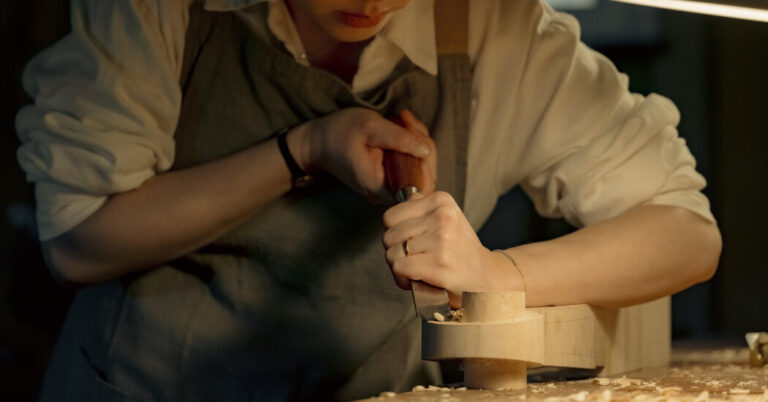The Art of Craft is a series about craftsmen whose work rises to the level of art.
When Ayoung An was 8, her parents bought her a violin. He sleeps with an instrument on his pillow next to him every night.
Two years later, a shop selling musical instruments opened in his hometown of Pyeongtaek, South Korea, and An became a fixture there, asking the owner questions. “I think I bothered him a lot,” says An, now 32.
As a teenager, he decided to become a violin maker. Eventually, a journey with twists and turns brought him to Cremona in northern Italy — a famous hub for violin makersincluding masters such as Antonio Stradivari, since the 16th century. There, An, a rising star in the world of violin making with international awards under his belt, runs his own workshop.
Set on a quiet cobblestone street, An’s studio is bathed in natural light and filled with books and piles of wood chips that need to air-dry for five to 10 years before becoming instruments or hazardous materials. warping. She shares the two-room studio with her husband, Wangsoo Han, who is also a violin maker.
Last Monday, An bent over a thick 20-inch piece of wood held by two metal clamps. Bracing his body for leverage, he scraped the wood with a gouge, removing the layers, his hands firm and steady. He forms a curving neck called a “scroll,” one of the next steps in making a violin or cello. Today, the violin maker falls into a commission for a cello, which shares a similar manufacturing process.
Violins like An’s, made in the tradition of Stradivari and Giuseppe Guarneri, require about two months of work and sell for about 16,000 to 17,000 euros, or $17,500 to $18,500. “I could make a violin in three weeks, but I don’t want to,” said An. “This thing is very important to the person who buys it.”
An was 17 years old when he carried out his plan to learn the craft: He would move with an American family to a Chicago suburb so he could attend a local high school, master English and eventually studied at the Chicago School of Violin Making. There were no such schools in Korea at that time. Her parents, upset about her moving far away to pursue an uncertain career path, tried to dissuade her.
“I didn’t eat for several days,” said An. Finally, they gave up. “When I said goodbye to my parents at the airport, they were crying,” he said. “I was not. I was so excited.”
Two years after moving to Illinois, he discovered that one of the most prominent schools for violin makers, the International School of Violin Making, is actually in Cremona. So in 2011, at the age of 20, he moved again to a new country.
Cremona is home to some of the most famous luthiers in history, makers of stringed instruments: Stradivari; Andrea Amati, considered the “father of the violin”; and the Guarneri family For the 160 to 200 violin makers in Cremona today, the sound quality of the masters remains the most objective. “The traditional method is not about experimentation,” An said.
Around the studio, small pots of pigment, for varnishing, sit on shelves and tables next to jars of powders – ground glass and minerals – for polishing. On one wall are dozens of knives, chisels and saws. Also included: dentist’s tools to scratch the instrument for a more antique look.
An is the youngest member of a consortium in Cremona dedicated to promoting violin making traditions. He was so enamored with the Cremonese way of violin making that, at the suggestion of a mentor, he created an artist’s name, Anna Arietti, to better fit the Italian culture.
An important moment is when the luthiers place their label inside the instrument, called “baptism.” To create her label, An stamped her signature in ink on a small piece of paper — a browned page from a secondhand book, giving the impression of age. Then, using a traditional home-made mixture of melted cow hide and rabbit skin as a permanent adhesive, he glued the label to the inside half of the instrument. He also burns the signature of his Korean name into the instrument with a small heated stamp.
Then, the two halves are sealed together, completing the main body of the instrument. His Italian artist’s name remains inside, intact as long as the violin.
“That’s why I want to be a violin maker,” said An. “At least someone who plays my violin will remember me 100 or 200 years later.”
